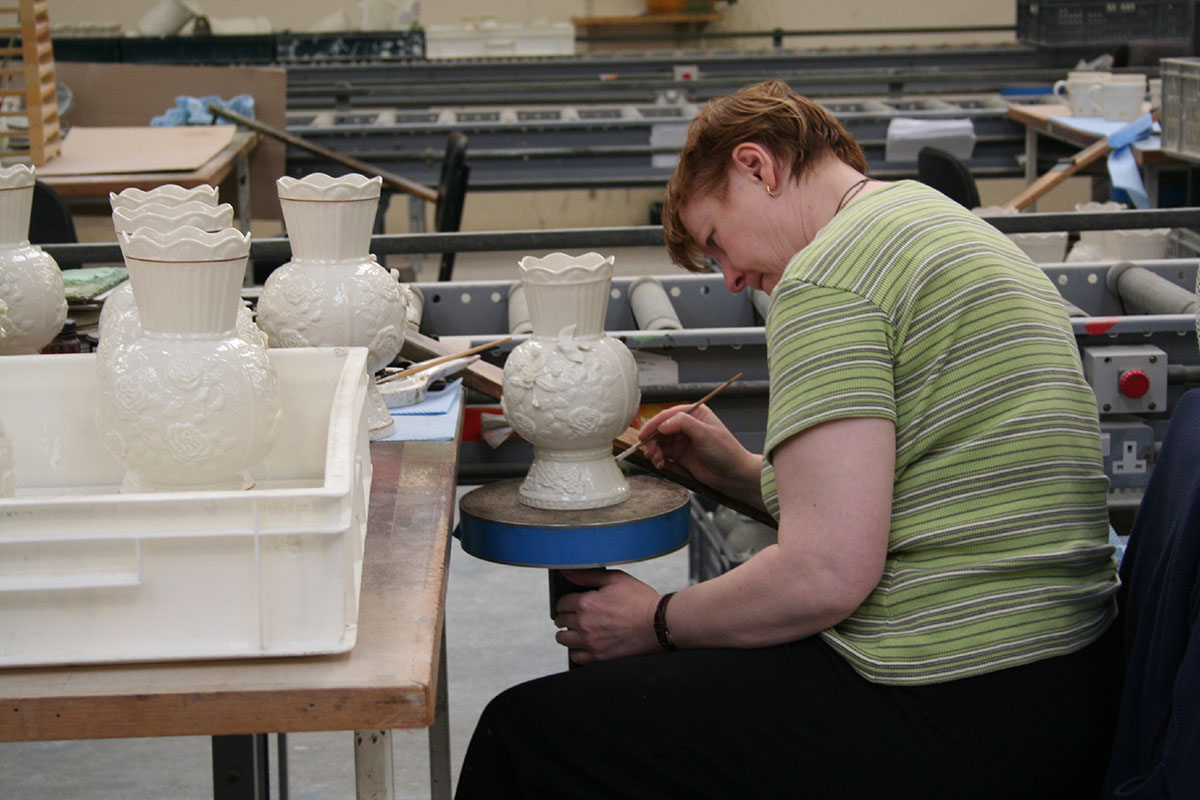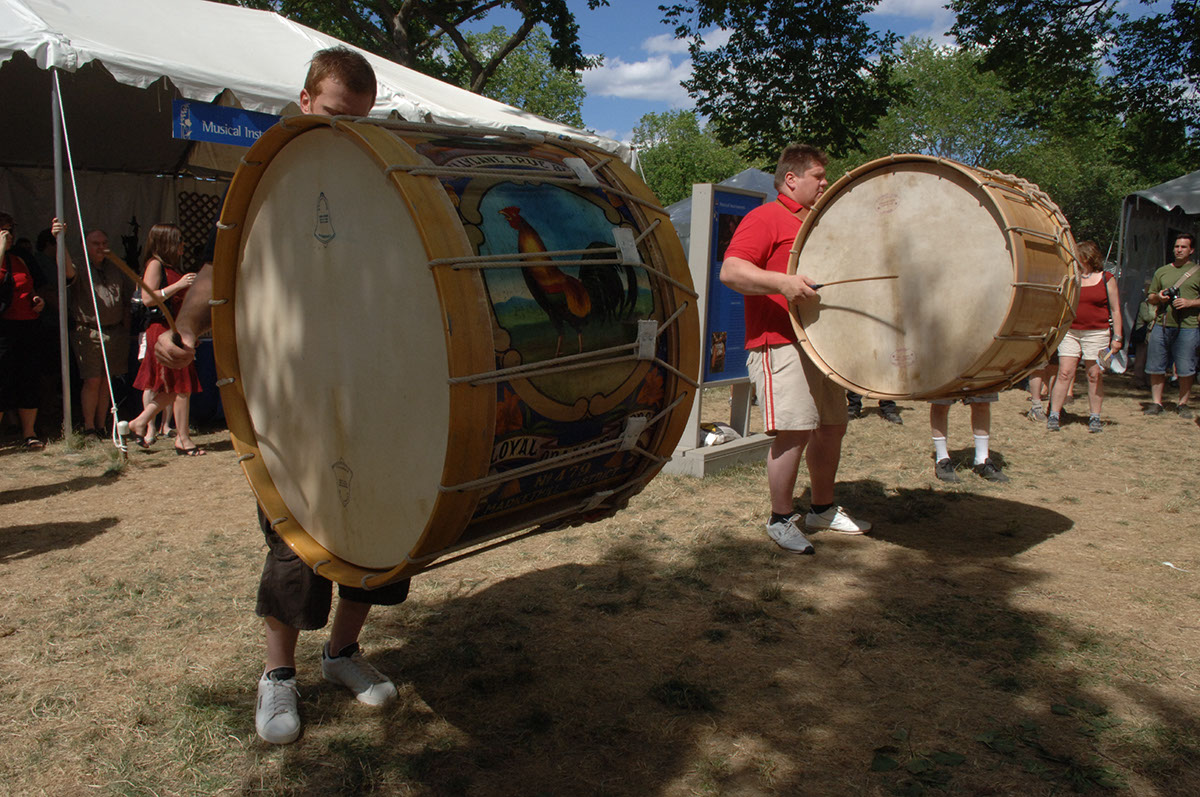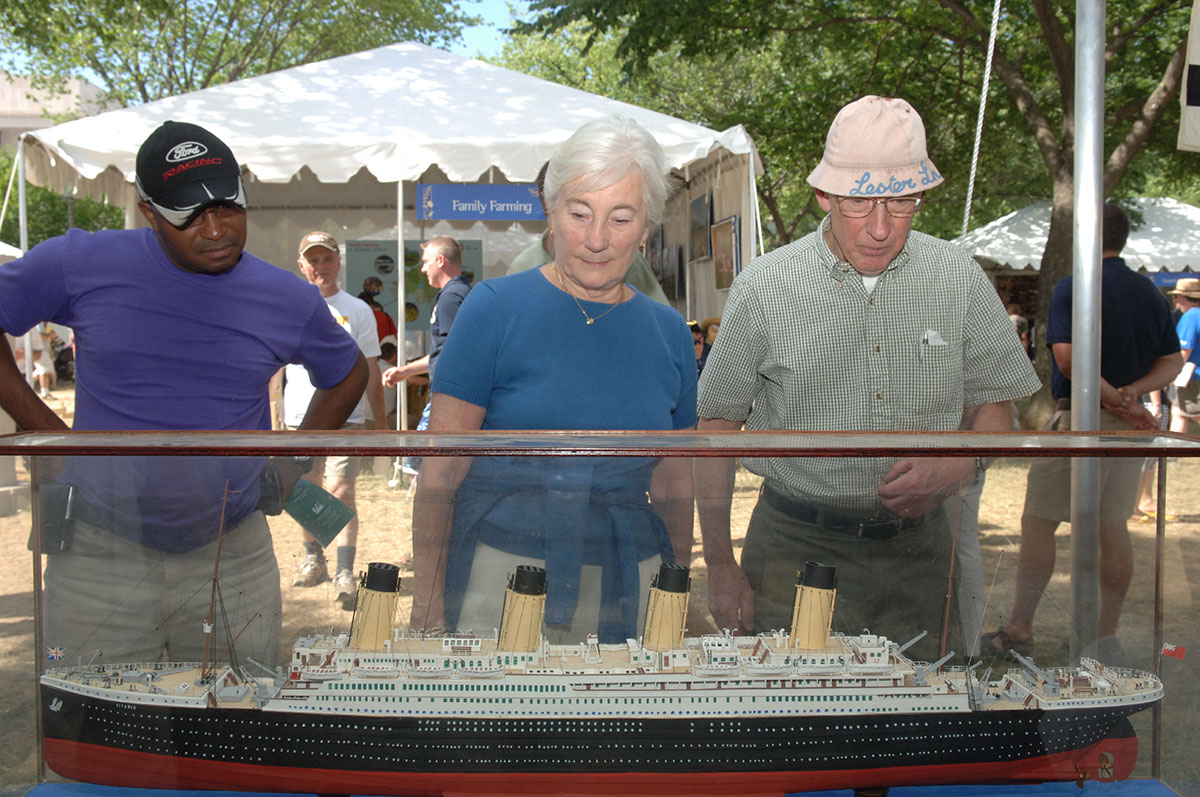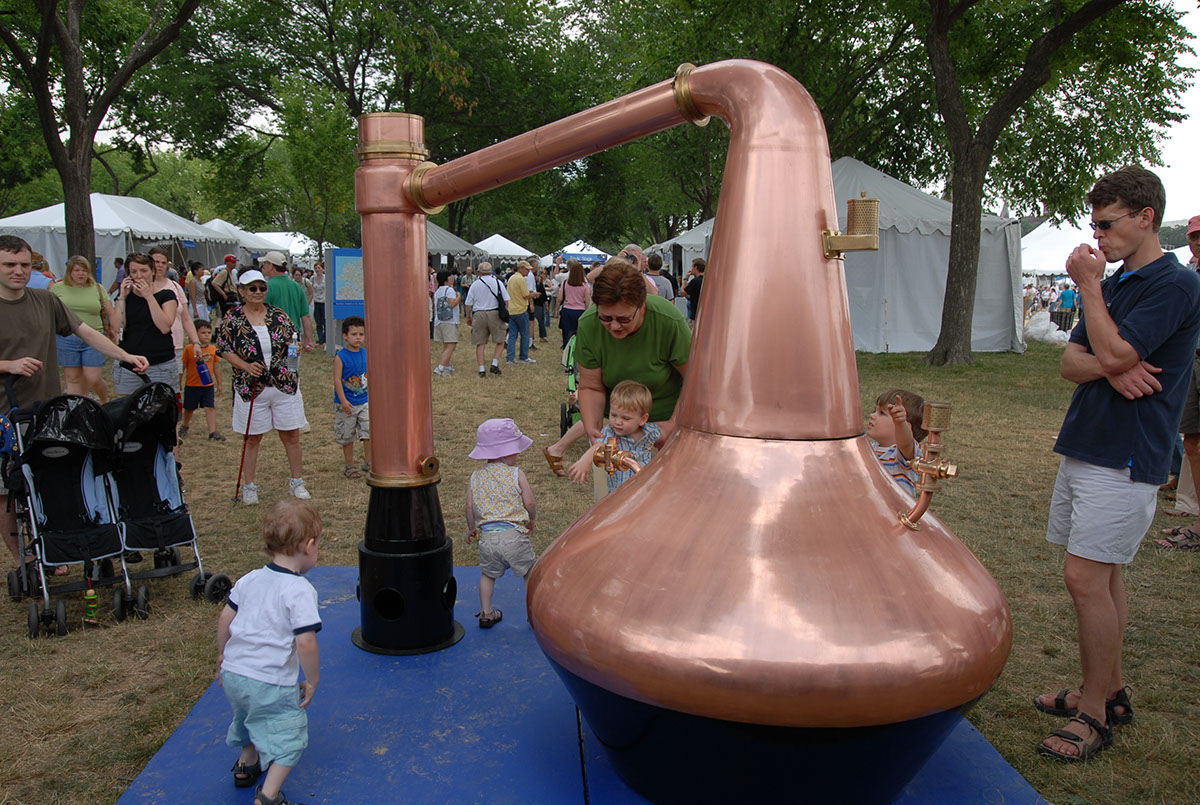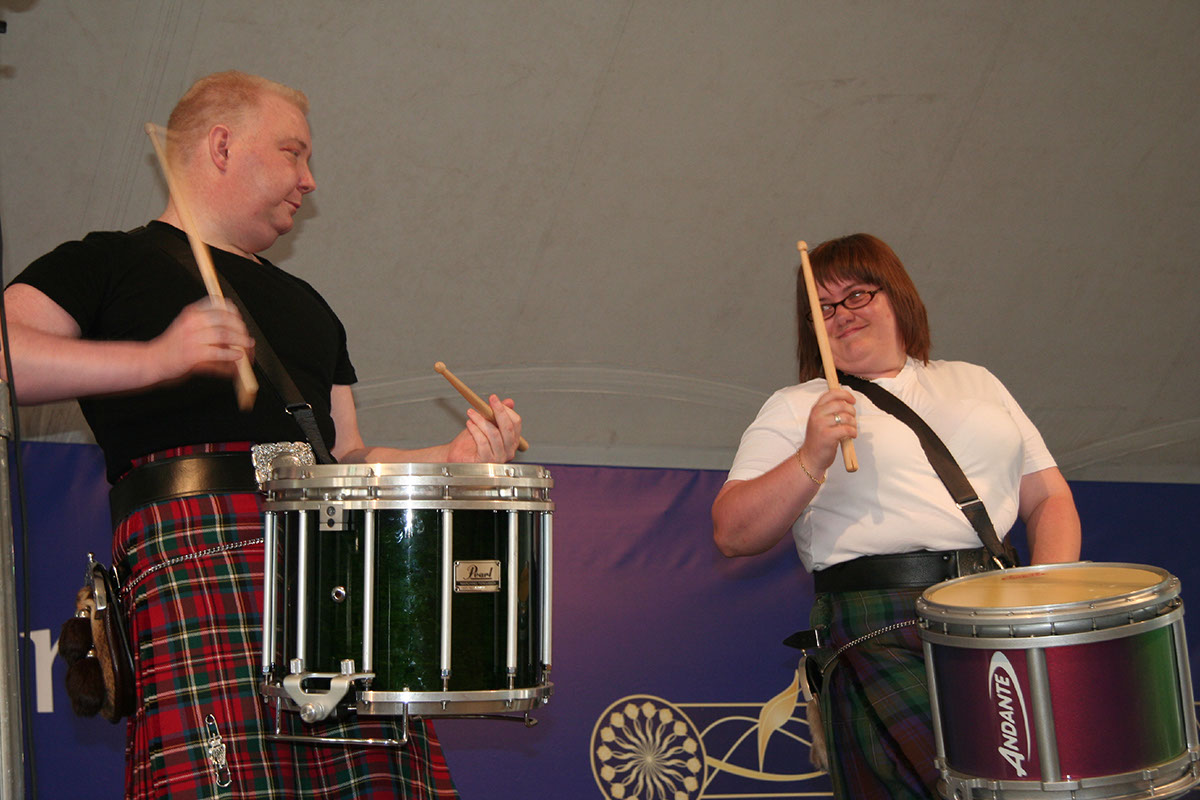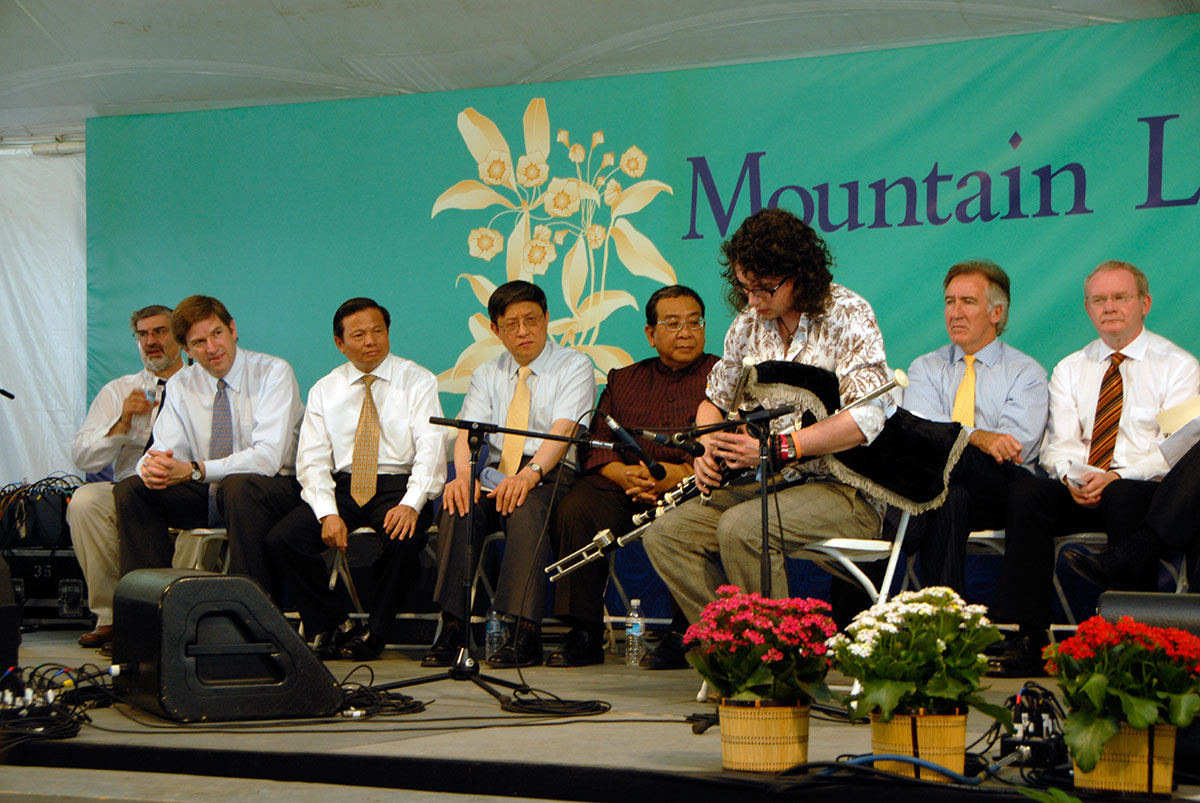The Northern Ireland at the Smithsonian program took place at a seminal moment in Northern Irish history, following a ten-year period of relative peace and stability and the restoration of Northern Ireland's political institutions. More than 160 participants from throughout Northern Ireland - the region's finest performers, artists, craftspeople, cooks, athletic coaches, and occupational experts - came to the National Mall to explain, demonstrate, and celebrate contemporary life in their beautiful, dynamic homeland.
The Festival program may have come as a surprise to some visitors. Like so much else about contemporary Northern Ireland, day-to-day reality transcends assumptions and challenges stereotypes. Northern Ireland is changing rapidly: in 2007, it was a sophisticated, forward-looking society with a booming post-industrial economy and a renewed sense of confidence in the future. Traditional culture, which in the past sometimes divided communities, now contributed to a shared future and fostered intercommunity relationships.
Northern Ireland's greatest strengths have always been the warmth, hospitality, and humor of its people. It has a population of approximately 1.7 million and five cities - each with its own unique character - and Belfast as its capital. It also has a large rural community that consists of a network of market towns and villages. Part of the United Kingdom, it shares a verdant island with the Republic of Ireland and comprises six of the nine counties of the ancient province of Ulster: Antrim, Armagh, Down, Fermanagh, Londonderry, and Tyrone. Few regions of the world have contributed more to the formation of modern American culture than Northern Ireland. Since the seventeenth century, a succession of immigrants from the region has had a profound impact on the development of the United States, heavily influencing culture, politics, education, science, religion, agriculture, and industry. At least seventeen U.S. presidents are claimed by Northern Ireland as her descendants.
Music in Northern Ireland takes place in myriad settings - kitchens, parlors, and pubs, as well as schools, festivals, and concert halls. Not infrequently, traditional forms of instrumental music - jigs, reels, marches, and polkas - attract dancers who happily spend evenings weaving the complex patterns of ancient Irish dances onto modern dance floors. Even as beloved old tunes are performed and sung for today's listeners, tomorrow's music continues to be created. Modern technology - recordings, radio, iPods, and cell phones - often helps spread the latest traditional-style compositions. Irish music, like other Celtic music, enjoys a worldwide popularity that few would have predicted only a few years before.
Although textile arts are particularly strong, numerous other crafts and art industries flourish in Northern Ireland. Specialized crafts are practiced in ateliers and workshops throughout Northern Ireland, where many artisans produce work such as jewelry, ceramics, glass, and clothing on a commercial or semicommercial basis. Some craftspeople specialize in making musical instruments, including uniquely Irish bodhrans, Lambeg drums, and uilleann bagpipes.
Another highlight of the Festival was Northern Ireland's unmistakable alimentary dialect - rich in diversity, fiercely independent, and supportive of local produce. Although much of the cuisine is heavily inspired by English and, to some extent, European fare, a flair for culinary innovation and exceptional resourcefulness have allowed the province to develop an entirely unique food culture. Other Festival presentations featured language, local history and heritage, and sports - all contributing to provide Festival visitors with an introduction to the fabled past, vibrant present, and exciting future of this beautiful place.
Nancy Groce was Curator and Jason Morris was Program Coordinator. A Curatorial Group included: Valerie Adams, Frances Bailey, Hazel Campbell, Heather Carr, Mick Cory, Anthony Cranney, Paul Flynn, Olga Gallagher, John Gilmour, Helen Gormley, John Gray, Linda Greenwood, Philip Hammond, Nick Harkness, Cathy Hurst, Aubrey Irwin, Colin Jack, Joe Kelly, Brian Lambkin, Fiona Lavery, Shan McAnena, Katherine McCloskey, Aideen McGinley, Colm McGivern, Declan McGovern, Jim McGreevy, Cathie McKimm, Lisa McMurray, Pat Murphy, Yvonne Murphy, Colette Norwood, Peadar O'Cuinneagain, Alice O'Rawe, George Patton, John Speers, Pat Wilson, and Vanessa Wilson.
The program was produced in partnership with the Department of Culture, Arts and Leisure of Northern Ireland and with the cooperation of the Arts Council of Northern Ireland and Rediscover Northern Ireland. Major donors to the Rediscover Northern Ireland program were Titanic Quarter Ltd. and RES. Other donors and supporters were BT, Diageo, Glen Dimplex Group, Grafton ESP, Norbrook, Resource, Bank of Ireland, BDO Stoy Hayward, Delta Print and Packaging, First Trust Bank, Henderson Foodservice, McCabes, McAleer & Rushe Group, McLaughlin & Harvey, Northern Bank, Seagate, Ulster Carpets, Belleek, FireIMC, Harrison Photography, and Northbrook Technology.


